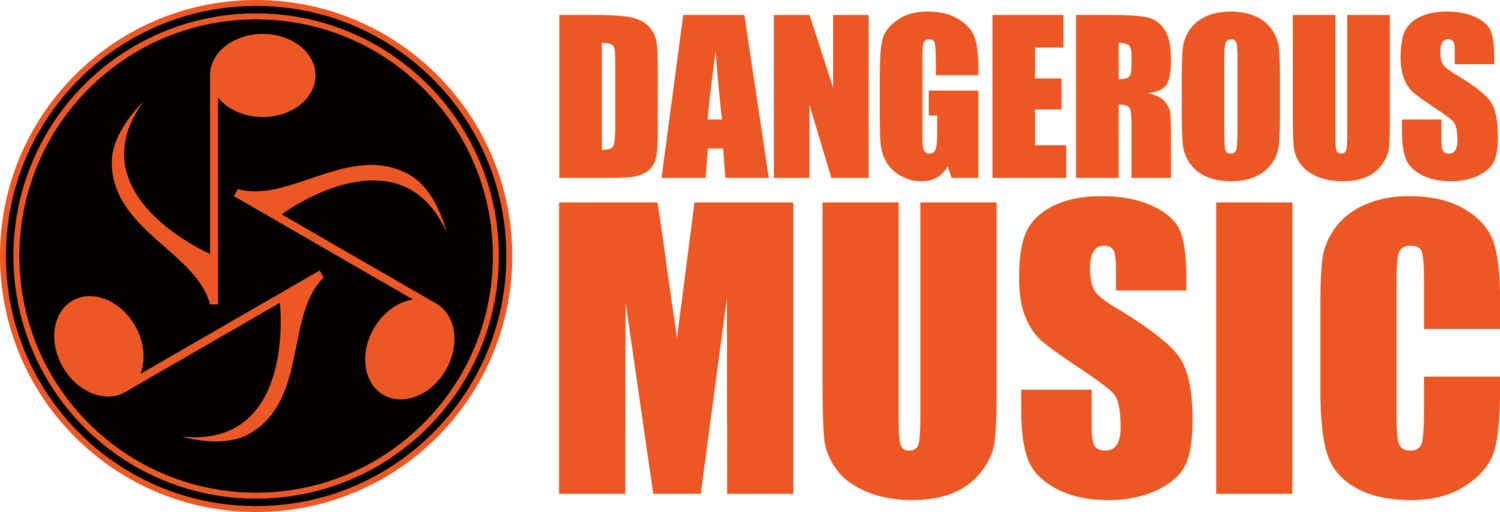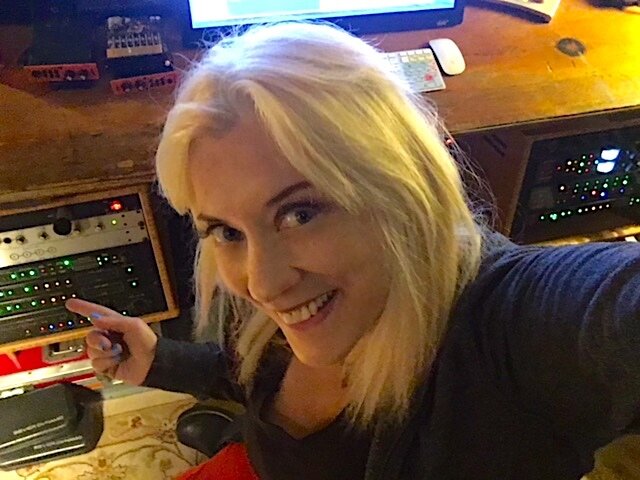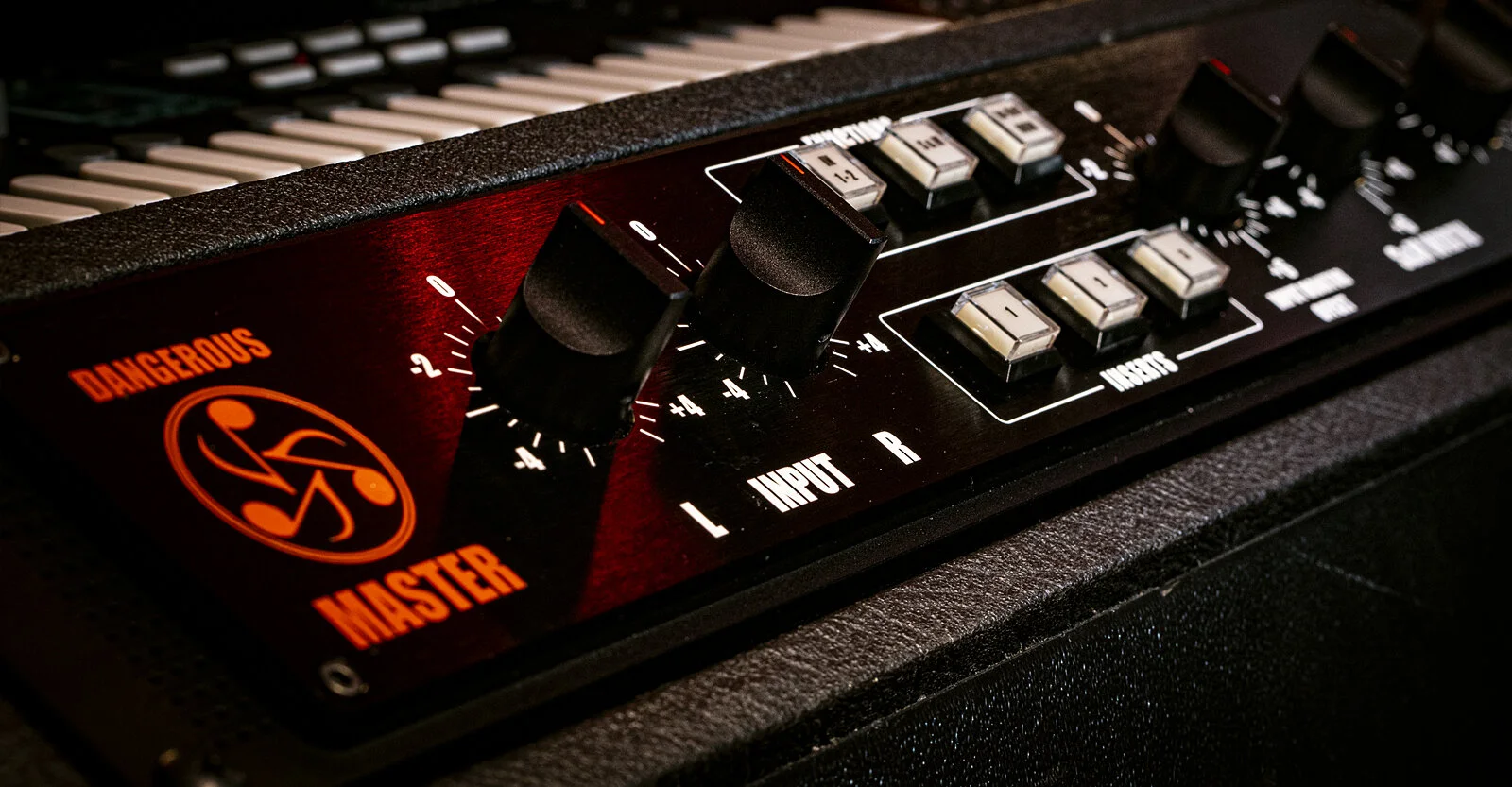SLY TOOLS IN THE STUDIO
Why Sylvia Massy converted to the Dangerous Music System Complete for her new studio mix room
By Brooke Bilyj
As a record producer, mixer, and engineer, Sylvia Massy is well-known for her fearless, experimental approach to producing unpredictable mixes. Early in her music career, Massy realized that every piece of equipment in the recording studio could be used as an instrument – and not in the typical way most musicians expected.
For example, on Undertow, Tool’s 1993 full-length double platinum-selling debut that she produced, Massy suggested that the alt-metal up-and-comers hide a Peruvian flute band in one song as a subliminal message, and record old upright pianos being smashed with sledgehammers for another.
Since then, Massy has exploited other tools in the studio – whether she’s making sub-kick microphones out of old woofers, rewiring telephones into drum mics, or feeding inputs into old tape decks to add distortion.
“I love to experiment in the recording studio,” Massy says. “I’m often using different types of filters to modify sounds as they’re being amplified – such as kitchen appliances, power tools, light bulbs and grocery store produce.”
Massy’s sonic curiosity has produced over 25 gold and platinum records. She has worked with artists ranging from Prince and Paula Abdul to Aerosmith and Seal – and, through her association with Rick Rubin, projects including the debut albums from System Of A Down and Geto Boys, as well as Smashing Pumpkins, Red Hot Chili Peppers, Tom Petty, and Johnny Cash’s “Unchained,” which won a Grammy award for Best Country Album.
Obviously, Massy has high expectations for every piece of equipment she brings into her studio in Ashland, Oregon. Since switching to the Dangerous Music System Complete (DMSC) last year, Massy’s musical arsenal is loaded to deliver the custom punch and flexibility that artists have come to expect from her. Here’s how she’s using her new setup to dazzle clients from all genres.
Massy’s Mix Bus Setup
“You never forget the first time you fall in love,” Massy says, “and I’ll never forget that feeling when I tried out my Dangerous Music MONITOR-ST for the first time. The handsome layout of the unit fits the way I work perfectly, with source selections, speaker selections, dim and auxiliary buttons at the ready, while the volume knob acts and sounds as it should.”
When she first tried it in 2017, Massy knew that the Dangerous MONITOR-ST would become a permanent part of her studio toolkit and would grow along with her as her system expanded. Less than two years later, Massy went all in and moved to the DMSC.
“I wanted a mix system that was designed and built to work as one unit – ready to drive right out of the box, with everything, including the cabling by JUMPERZ, perfectly matched and labeled for installation,” she says.
Within just a few weeks of experimenting with the new system, Massy says she was “flying on the DMSC,” printing passes that brought clarity to her projects.
“With the converters, it’s as pure as you can get straight from your DAW,” she says. “The analog signals are summed neatly into the 2-BUS+. One of My favorite functions about the 2-BUS+ summing mixer is the insert feature.”
Massy uses the insert feature to customize mixes by expanding it with the Dangerous Music LIAISON, which allows her to call up the Dangerous Music BAX EQ, COMPRESSOR, and other analog outboard. “I’m able to patch extra gear right in front of the rack – no more digging around behind the rack trying to patch something in,” Massy says. “It allows me the versatility to add analog processors into my mix with an easy patch and the push of a button.”
This plug-and-play flexibility is vital to capturing Massy’s signature style of incorporating unorthodox tools and techniques in the studio. Her playful approach to engineering demands equipment that can keep up with her venturesome production spirit.
“Dangerous has the beautiful BAX EQ and COMPRESSOR that can be inserted into the signal chain through the LIASION patching unit, but they don’t degrade the signal – they just enhance it,” Massy says. “On occasion, I will color a mix with an unconventional processor across the stereo bus – like a pair of vintage transformers, a tape simulator, or I’ll even use the insert to put an old cassette recorder across the mix – just to put some schmutz on it. The blend feature on the LIASION lets me add fun stuff without completely losing the mix integrity.”
The Dangerous Difference
Massy started using the DMSC initially in search of more headroom compared to mixing in the box. Although she wasn’t looking to alter the sound, she quickly noticed the sonic benefits that the Dangerous System unlocked, as a result of the expanded headroom.
“The DMSC maintained the sound of my mixes, while reducing the claustrophobia of working in the box,” Massy says. “Mixing digitally has its issues, but the DMSC sorted all that out. I haven’t had to change the way I mix, yet the improvement in sound is dramatic. The DMSC gives the listener the ability to see through the mix to the back of the room.”
Massy heard the Dangerous Music difference instantly – and her clients did, too. In fact, they asked her to remix an entire album because of it.
“I finished a mix project right before the DMSC went online in my mix room,” Massy says. “I listened to one of those finished mixes through the Dangerous System and was freaked out at how much better it was – more depth, detail, and clarity. It was like the mix became three-dimensional!”
As soon as she shared the results with her client, Massy ended up making more work for herself.
“I decided to reprint the whole project using the new system and sent it to the client. I said, ‘Hey, isn't this better?’ They agreed, then sent me a whole frickin' dump truckload of fixes to do to the mixes because the Dangerous system revealed so much,” Massy says.
Studio Revamp
The Dangerous transformation isn’t the only change happening in Massy’s studio lately.
“I am in the process of building a new, top-notch mix room at my studio facility in Ashland, Oregon,” Massy says. “I’m expanding my system to include immersive object-based mixing.”
While her DMSC equipment is moving into the new mix room, Massy has been taking a brief hiatus from mixing to finish writing her next book, “The Great Vintage Microphone Book,” which will be released in 2020.
“It will be the go-to book on vintage mics, a birdwatcher’s guide to collecting vintage microphones, and not only the super expensive ones, but the ones you find in a yard sale. It is a book for mic lovers,” says Massy, who claims to have the world’s largest collection of vintage microphones, with nearly 2,000. “It goes into detail on the invention of microphones and the importance of mics through history, with a comprehensive encyclopedia section of makes and models with colorful photos.”
An accomplished artist and author, as well as producer, Massy is a busy entrepreneur with plenty on her plate. But she can’t wait to dive back into the studio to start mixing on her DMSC in the new room to see what else she can create.
“I wish I had the DMSC for all that Rick Rubin stuff I worked on: Johnny Cash, Tom Petty, System Of A Down. There would have been a lot less pain involved,” Massy says. “Dangerous Music products will easily take center stage and become the beating heart of your studio, the gear you use the most.”






